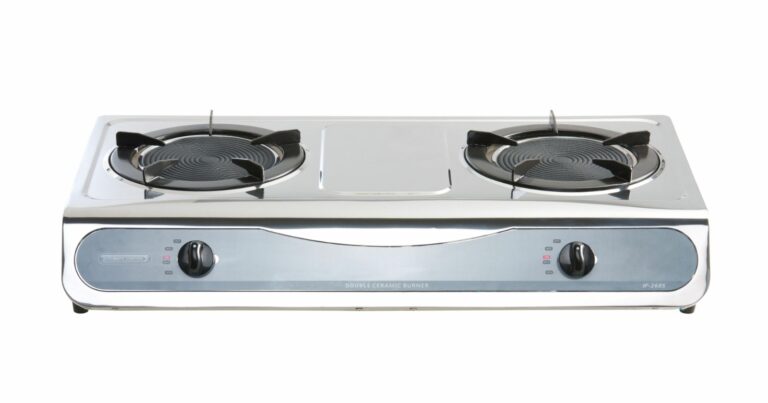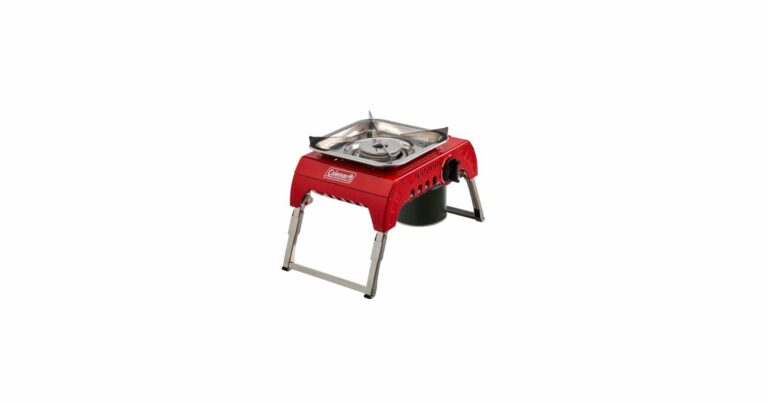How to Easily Put Up a 6 Person Tent for Your Next Camping Trip
The sun is out, the gear is packed, and you’re ready to head into the great outdoors for a camping trip with your crew. But when you arrive at the campsite, you’re faced with the task of setting up your large 6 person tent. If you’ve never put up a tent this big before, it can be intimidating. Where do you even start?
Not to worry! Putting up a 6 man tent is totally doable if you follow the proper steps. With just a bit of know-how, you’ll have your spacious home-away-from-home erected in no time.
First, pick out a nice, flat spot of ground to place the tent. Make sure to clear away any sticks, rocks or lumpy debris – nothing will ruin a camping trip quicker than a hole in your tent floor or waking up with a rock in your back.
Next, unpack the tent body and take out all the support poles and stakes. Pay attention to how the poles connect together; most 6 man tents use just two or three main poles. Thread them through the sleeves or clip them to the tent corners.
Stand the tent up by lifting the poles into place. Stake down the corners taught. Make any final adjustments to get the tent centered and sturdy. If your tent has a rainfly, attach that too at this point.
Finally, do a test push on the walls to confirm your tent is firmly situated. Now you can unroll your sleeping bags and get the camping started!
Setting up a large 6 person tent is easy when you know the drill. With these tips, you’ll be a pro tent master in no time. The rest of this article will walk through all the nitty gritty details of erecting your home away from home. Let’s get camping!
Choose the Right Location
Picking the perfect tent spot is key for sleeping soundly under the stars. Take a look around your campsite for a flat, level area free of bumps, rocks, roots or anything else that could damage your tent floor or cause discomfort at bedtime. Grass or bare dirt both make great ground cover. Just be sure to clear away any sticks, pinecones or pointy debris. Having a soft, flat surface will go a long way towards a good night’s rest.
Unpack and Organize All Materials
Before getting started, unpack everything from your tent bag and organize it neatly. This lets you take stock of all the components and makes set up less confusing. A 6 person tent will likely have the following:
- Tent body
- Rainfly
- Poles (usually 2-3 main poles)
- Stakes
- Guylines
- Pole bag
- Stake bag
Take a minute to separate and untangle the poles and read any setup directions included with your model. Understanding how the parts fit together ahead of time makes the process smoother.
Lay Out the Ground Cloth
It’s always a smart idea to use a ground cloth, also called a footprint, underneath your tent. This is an extra layer that protects the tent floor from getting punctures, tears or excessive wear from the ground underneath. Simply spread out the ground cloth on your cleared tent site, anchoring the corners with a few rocks or stakes if it’s windy. Then you can place the tent itself right on top.
Unfurl and Position the Tent Body
Unfold your tent and spread it out fully over the ground cloth, trying your best to center it within the area you’ve chosen. For now you can just loosely lay the tent fabric into place. Later, once the frame is constructed, you’ll be able to make adjustments to get it positioned perfectly.
Assemble and Insert the Poles
Time to build the “skeleton” that gives your tent its shape! Follow the specific instructions that came with your 6 person tent to properly connect together the shockcorded pole sections.
Most family-sized tents use two or three main poles. Once assembled, gently bend the poles and slide them through the sleeves or clip them into the corners. The tent will start taking form as the poles give it structure.
Lift the Tent and Stake Down Corners
Here comes the fun part! With a friend on either side, grab two corners and lift the tent up, using the poles for support. Try to evenly raise the tent into an upright position, centered over the ground cloth.
Working quickly, stake down the 4 corners (or more for a hexagonal tent) using the provided metal stakes and a mallet. Drive stakes at an angle for maximum holding power. Ensure guylines are staked down as well.
Secure the Rainfly
If your tent includes a waterproof rainfly (and it should!), the next step is to drape it over the tent and attach it using the designated clips, grommets or Velcro tabs. Tuck any flaps under the roof and make sure water won’t pool anywhere. The rainfly is key for keeping you and your gear dry.
Fine Tune the Positioning
You’re so close! Now that the structure is fully assembled, take a walk around it to check positioning. Make any necessary adjustments to get it centered and pulled taut. Verify all stakes and tie-downs are secure. Use the remaining stakes if you notice any sag or loose corners.
Do a Test Push
Before calling it done, give the erected tent a test push on all sides. Apply light pressure and look for signs of shifting or instability. All poles and stakes should feel snug and deeply anchored. Push up into the bottom to check for sagging. Take the time now to fix any issues before turning in for the night.
Stake Out the Vestibules
Most 6 person tents have large, covered vestibules extending off the front or back to protect the doorways. The last step is to use additional stakes to stake out the vestibule corners away from the tent body. This creates more livable space underneath.
Bonus tip: Use a mallet or hammer rather than trying to push stakes in with your hands. And be sure to pick a well-draining tent spot, avoiding dips or depressions where rain could pool.
Congratulations – your spacious 6 person tent is now fully erected and ready for camping! Just lay out your sleeping pads and bags inside, then it’s time to relax under the stars. Following these simple steps removes the hassle from setting up a large tent. Soon you’ll be a pro at getting your home away from home pitched quickly and properly. So gather your crew and go enjoy the great outdoors in comfort and style!
Helpful Gear for Tent Setup
Having the right gear on hand makes pitching a 6 person tent much simpler. Here are some useful items to include in your camping box:
Mallet – Drive tent stakes securely into the ground using a heavy-duty mallet instead of trying to push them in by hand.
Headlamp – Illuminate your campsite when setting up at night or in the dark.
Multi-tool – Performs various functions like a hammer, knife, pliers or screwdriver for adjustments.
Work gloves – Protect your hands from pinch points, scrape and cuts when handling poles and stakes.
Seam sealer – Seal up any small tent leaks or holes with a special waterproofing compound.
Duct tape – Temporarily patch holes, tears or broken poles in a fix.
Tips for Keeping Your Tent in Top Shape
Invest in a quality 6 person tent and it will shelter your camping crew for seasons to come. Follow these tips to get the longest lifespan from your tent:
- Let the tent air dry fully between uses to prevent mildew growth.
- Use a seam sealer on floor seams and around door zippers to maintain waterproofing.
- Check for holes, tears or damaged zippers and patch them promptly.
- Loose broken poles with pole splints or duct tape.
- Clean with mild soap and water only when needed.
- Store unpacked and extended to prevent creases from forming.
- Don’t pack away when damp as moisture causes rapid deterioration.
Choosing the Best 6 Person Tent
If you’re in the market for a new spacious tent, keep these factors in mind when choosing:
Size – Consider both floor space and overall height. Look for around 90-100 square feet of area with 6’ center height or more.
Doors – Multiple doors make entry and exit easier for a group. Look for at least 2 doors, if not 3 or 4.
Poles – Shockcorded aluminum poles are light but sturdy. Fiberglass can shatter under stress.
Waterproofing – Ensure good rain protection with full coverage rainfly and sealed seams on floor.
Ventilation – Mesh roof panels, body vents and vestibules allow air flow to prevent condensation.
Packed size – Backpacking tents pack small while unit tents take up more space. Assess based on your car or gear capacity.
Weight – Heavier models are bulkier but often roomier. Lightweight saves pounds but sacrifices livable space.
Price – Budget at least $150-$300 for a quality 6 man tent built to last.
Doing a bit of research ahead of time lets you select the perfect tent for your needs that will provide years of camping enjoyment.
Tent Shape and Style Options
When it comes to six person tents, you’ll find a range of configurations to suit different needs:
Cabin/square – Offer the most interior space due to nearly vertical side walls. Great for car camping.
Dome – Classic sloped style balances headroom and wind resistance. A popular choice.
Tunnel/hoop – Excellent wind shedding from the curved hoop pole design.
Geodesic dome – Dome style utilizing a complex criss-cross pole structure for strength.
Hexagonal – Six-sided design provides more headroom than a dome.
Pop-up – Spring into place instantly; very fast to set up.
Unit tents – Attach together into one large tent using add-on modules. Ideal for big groups or families.
Camping Tent Materials Compared
Tents come constructed using various different fabric materials, each with pros and cons:
Polyester – All-purpose option that is lightweight, water-resistant, durable and inexpensive. The most common tent fabric.
Nylon – Slightly more durable than polyester, with good waterproofness. Easy to clean. Prone to stretching when wet.
Canvas – Very heavy duty and breathable. Condensation-free but takes longer to dry out. Best for long-term camp sites.
GORE-TEX® – Expensive but high-tech. Allows moisture vapor through while remaining completely waterproof. Used for ultralight backpacking tents.
Storing Your Tent Properly
Make your tent last longer by practicing proper storage habits:
- Allow to dry out fully extended before packing away to avoid mildew.
- Clean off mud and debris before storage; brush off don’t scrape.
- Fold and roll rather than stuffing tent into a bag to avoid creasing and damage.
- Keep stored in a cool, dry place protected from direct sunlight.
- Never store when wet, muddy or damp as moisture breeds mold and rot.
- Loosen pole and stake storage bags so material is not under pressure.
Proper storage keeps your tent looking and performing like new, season after season. With time and use, tents do wear out. But following these best practices will extend its lifespan significantly so you get the most bang for your buck.
Pitching a Rainfly-Only Shelter
Heading out for a backpacking trip but want to travel light? Try using just your rainfly as an ultra-minimalist shelter. Here’s how:
- Find a camping spot under trees to use as poles. Trees hold up the corners.
- Drape your rainfly over a rope strung between two trees.
- Stake down all 4 corners, then optional front vestibule areas.
- Crawl in underneath and use trekking poles to lift the middle for more space.
While not as sturdy or bug-proof as a tent, a rainfly-only setup can get the job done for ultra-light hikers with minimal gear.
Troubleshooting Common Tent Problems
Don’t let minor issues ruin your camping experience. Try these fixes for common tent problems:
Condensation – Increase airflow by opening vents and vestibules wider. Also use a footprint under the tent and position away from lakes/rivers.
Leaking seams – Apply a urethane-based tent sealant on floor seams and rainfly stitches. Reapply annually.
Broken pole – Splint with duct tape or a stick, then replace the pole when possible. Carry emergency repair sleeves and splints.
Lost stake – Use a substitute like a stick, rock or trekking pole pierced into the ground.
Bent pole – Gently bend back into shape. Avoid forcing or over-bending.
Stuck zipper – Lubricate with wax or silicon spray. Never force.
Tears – temporarily patch tears with duct tape until they can be properly repaired.
Frequently Asked Questions
What size mallet should I use for pounding in stakes?
A medium-sized rubber mallet around 16-ounces works perfectly for driving tent stakes into most soils without being overly heavy. Goes easier on your arm than a full size sledgehammer!
How can I repair small holes or rips in my tent?
For minor tent tears and holes, use a urethane-coated ripstop fabric patch kit made for tent repair. Clean the area thoroughly before applying the adhesive patch from the inside of the tent.
Should I apply a tent waterproofing spray?
Yes, treating your tent periodically with a silicone or urethane based waterproofing spray can help improve water repellency and prevent leaking through the fabric. Avoid applying to the floor though.
What should I do if the zipper breaks on my tent?
If a tent zipper slider breaks or separates, a quick fix is to hand-sew the slider back on with strong nylon thread or dental floss. Long term, the entire zipper may need replacement.
Is it okay to set up my tent on concrete or asphalt?
No, avoid direct contact between your tent floor and concrete or asphalt as the hard, abrasive surface can rapidly wear holes in the fabric. Use a thick ground pad or cloth underneath if necessary.
Enjoy Your Next Camping Trip!
A 6 person tent makes camping with a crowd comfortable and fun since everyone has room to sprawl out. By following this step-by-step tent setup guide, you can breeze through getting your home base put together so you can start relaxing in the great outdoors. Soon you’ll be a tent pitching pro ready to lead your crew on an amazing camping adventure!







